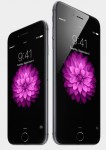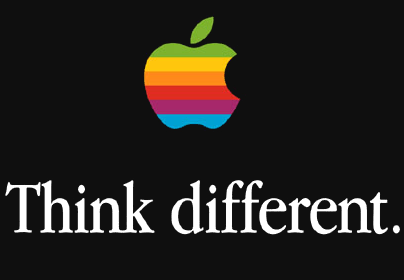With the Flint Center in Cupertino, California packed, Apple CEO Tim Cook started off Tuesday’s Apple event. Typically, he would start out talking about how many gazillion iPhones have sold, how the adoption rate of the latest iOS version eclipses that of Android adoption and a myriad of other sales numbers and statistics. When Mr. Cook started out by just giving the assessment, “Everything’s great”, you knew big things were going to happen.
With that 2-word assessment out of the way, the CEO turned his attention to new iPhones. What??? This never happens. The iPhone is always the jewel at the end of the presentation. Wow.
 “Today we are pleased to announced the biggest advancement in iPhone,” he said. Two iPhone models were introduced – iPhone 6 and iPhone 6 Plus. As widely anticipated, Apple is going large, with the iPhone 6 sporting a 4.7” display and iPhone 6 Plus, a 5.5” display. This is in comparison to iPhone 5’s 4” display. Both models have a new Retina HD screen made with ion-strengthened cover glass, not a sapphire crystal display as had been widely rumored. iPhone 6 has a resolution of 1334 by 750, with a pixel-density of 326 pixels per inch (ppi); iPhone 6 Plus has a resolution of 1920 by 1080 for an amazing 401 ppi.
“Today we are pleased to announced the biggest advancement in iPhone,” he said. Two iPhone models were introduced – iPhone 6 and iPhone 6 Plus. As widely anticipated, Apple is going large, with the iPhone 6 sporting a 4.7” display and iPhone 6 Plus, a 5.5” display. This is in comparison to iPhone 5’s 4” display. Both models have a new Retina HD screen made with ion-strengthened cover glass, not a sapphire crystal display as had been widely rumored. iPhone 6 has a resolution of 1334 by 750, with a pixel-density of 326 pixels per inch (ppi); iPhone 6 Plus has a resolution of 1920 by 1080 for an amazing 401 ppi.
The new models are also thinner than their predecessor. iPhone 6 is 6.9 mm (0.27”) thick while iPhone 6 Plus is 7.1 mm (0.28”) compared with the 7.6 mm (0.30”) thickness of iPhone 5s.
A really nice feature of iPhone 6 Plus is its ability to display the home screen and apps in landscape mode, allowing more information to be displayed on the screen. Some applications, such as CNN’s app, are being re-engineered to support landscape display. Older apps still “just work” on the new larger iPhones in portrait mode.
Phil Schiller, Apple’s senior vice president of Worldwide Marketing, called the new editions “the best iPhones we’ve ever done.”
Inside, the new iPhones are equipped with a new 2nd-generation 64-bit chip, A8. It is 13% smaller than A7 and up to 50% faster than the chip that powered the original iPhone.
If you are concerned about one-handed use with such a large screen, there’s a new gesture called “reachability.” By double-tapping the Touch ID button, an app slides down so you can reach it easier.
There is also a next generation motion coprocessor, the M8. The M8 can count steps, measure distance, detect elevation (as in climbing stairs), all things that are integrated into iOS 8’s Health application.
There is improved battery life when compared with the iPhone 5s, Phone 6 supports 50 hours audio, 11 hours video, 11 hours wifi browsing and 10 hours LTE browsing. iPhone 6 Plus supports 80 hours audio, 14 hours video, 12 hours wifi browsing and 12 hours LTE browsing.
The new iPhones also supports 802.11ac protocol for wifi, which is three times faster than 802.11n in iPhone 5s. Of course, you need to have a router that supports this protocol to gain the benefit from it.
For LTE, 20 bands are supported as opposed to 13 in iPhone 5s. This is more bands than any other smartphone. Apple introduced VoLTE (Voice over LTE) to simultaneously support voice and data.
Initially, TMobile in the U.S. and EE in the U.K. will support the ability to make calls over wi-fi which can seamlessly transfer to LTE if you move out of range of wifi.
The camera is able to focus twice as fast using focus pixels for phase detection autofocus. iPhone 6 Plus also has optic image stabilization which moves vertically and horizontally to stabilize a photo and improve image quality. The video camera will support 1080p video at 60 frames per second (fps) with slow motion video at 240 fps.
Apple is going big with storage. Both models will be available in 16GB, 64GB and 128GB.
So, as always, the questions always come down to when and how much. When is September 19th for the U.S., Australia, Canada, France, Germany, Hong Kong, Japan, Singapore and the U.K, with other countries following shortly after. Pre-orders can be placed starting on September 12th. iOS 8 will be available on September 17th for current devices in order to avoid the crush of updating current phones commencing on the same day that the new devices are available.
Pricing in the U.S. with a 2-year contract was announced. iPhone 6 pricing is $199 (16GB), $299 (64GB) and $399 (128GB). iPhone 6 Plus adds $100 for each price point. As is the standard practice, two older models will be available — iPhone 5c (8GB) will be free and iPhone 5s will start at $99.
 Enough with iPhones. The next topic was Apple Pay. This is Apple’s NFC solution. Each of the new iPhone models have an NFC radio antenna built in across the top. This will allow easy payment at brick and mortar stores equipped to accept NFC.
Enough with iPhones. The next topic was Apple Pay. This is Apple’s NFC solution. Each of the new iPhone models have an NFC radio antenna built in across the top. This will allow easy payment at brick and mortar stores equipped to accept NFC.
With all of recent account hacks at numerous stores, a major concern is security. Apple says there is no need for concern. Credit card numbers are not stored on the device or in the cloud. One-time payments are made with a dynamic security code. Also, Apple doesn’t know what you bought, where you bought it or how much you spent. Should your iPhone be lost or stolen, you can use ‘Find My iPhone’ to remove any payment methods. Apple Pay will initially be offered in U.S. for MasterCard, Visa and American Express. Banks such as Citi, Chase, Bank of America and PNC are on board as are retailers and restaurants such as Bloomingdales, Disney stores and Disney World, Macys, McDonald’s (including drive-thru), Panera, Staples, Subway, Walgreens, Whole Foods, Disney stores and Staples. Restaurants supporting Apple Pay include Subway and Panera Bread. And of Apple retail. NFC will be available online for purchases from Groupon, Panera, MLB, OpenTable and, yes, the Apple Store. Apple Pay will be available in October, 2014. While this mobile payment technology has been available on other devices for quite some time, it has not been widely adopted in the U.S. NFC coming to the new iPhones should make Apple a major force in moving this technology into the mainstream. Apple’s bank and retail partnerships could finally be the real deal for NFC.
So, are we done? Not by a long shot. With a nod to Steve Jobs, which the crowd absolutely loved, Tim Cook said “We’re not quite finished yet. We have ONE MORE THING.” He then introduced the jewel of the event, Apple Watch. Apple hopes to do for wearables what it did for portable music devices, smartphones and tablets. The wearable works seamlessly with an iPhone and is a “comprehensive health and fitness device.”
 So, how do you navigate through such a small device? Easily and elegantly using the “digital crown”, better known as the knob on an old-school watch. The digital crown allows you to zoom and scroll. To return to the home screen, just push it in.
So, how do you navigate through such a small device? Easily and elegantly using the “digital crown”, better known as the knob on an old-school watch. The digital crown allows you to zoom and scroll. To return to the home screen, just push it in.
Other navigation is similar to iPhone navigation. To navigate to different ‘neighborhoods’ of apps, swipe the screen. To open an app, tap on it. You can control music, manage your calendar and send and receive text messages. Apple Watch interprets the content of your text messages and presents you will a list of possible responses. You can also use dictation and animated emojis. Of course, Siri is there to help manage your world as well. Your favorite photos from your iPhone are available as well.
Apple Watch is compatible with iPhones starting with iPhone 5. Pricing starts at $349. It will be available early 2015.
So, there you have it. Well, almost. To cap everything off, U2 performed and subsequently announced that their new album, Songs of Innocence, is free to iTunes subscribers, all half a billion of them, through mid-October.
